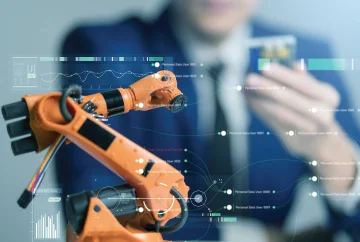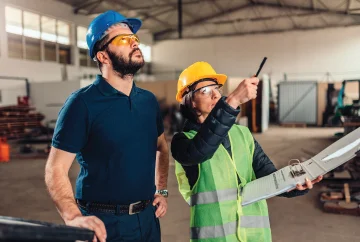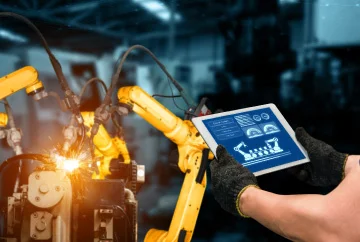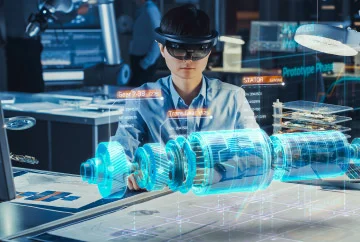In the post-2020 world, almost all manufacturing companies have set out towards their Industry 4.0 transformations. In this process, robotic technology gains traction on the production floors and drives efficiency and outputs toward hyper-optimal levels.
Industry 4.0 Obliterates Legacy Challenges
Robotics has seen widespread interest and adoption in the manufacturing industry since the 90s. However, legacy robotics was challenged by networking technologies and computing paradigms that were still in their infancy. Industrial Revolution 4.0 brings a cluster of advanced networking technologies like 5G and Wifi 6, in conjunction with the shift of computing power to the edge has given rise to advanced robotics, bringing greater mobility, adaptability, and orchestration speed with productivity enhancements in manufacturing operations. Moreover, maturing AI applications, widening IIoT networks, and better machine-to-machine communication with well-defined protocols also paves the way for human-machine collaboration.
In sum, advancements within the Industry 4.0 paradigm afford significant possibilities for industrial robotics. Across sophisticated repetitive processes that require cognitive inputs, one bot will account for 2.8 FTE hours on the production floor. No wonder that over 52% of companies expect the number of employees on the production floor to drop by at least 5% by 2025.
Robotics in Manufacturing: Implementation and Implications
Advanced robotics brings numerous benefits that legacy robotics technology is failing to deliver in the context of today’s challenges of the manufacturing industry.
For instance, today's robotic technology enables manufacturers to easily configure and reconfigure their bots for a greater degree of customization of manufactured items. It lends a greater degree of customizability and changes in the production line. With onboard intelligence and cloud-based workflow control, advanced robotics makes actuators more autonomous and manufacturing operations more agile, less human intervention-dependent, and more efficient than ever before.
Here are some of the major types of robots that are being leveraged to automate processes within manufacturing facilities:
- Autonomous Guided Vehicles (AGVs): AGVs are driverless vehicles and drones that enable automated or human-driven remote inspection and autonomous intra-facility logistics. AGVs are integrated with ERPs, manufacturing operations technology, and inventory management systems to keep the production line running smoothly
- Autonomous Mobile Robots (AMRs):AMRs are increasingly exhibiting more stable mobility across surfaces and automate highly repetitive functions such as picking, sorting, carrying, packaging, stacking, and replenishment of items on the production line
- Articulated Robots/Robotic Arms:Robotic arms have been a critical element of the assembly process and have taken on welding tasks for a few decades now. However, today’s articulated robots exhibit negligible micro stops, greater precision, and consistency, and multiple rotary joints bring more excellent dexterity and adaptability to the assembly line
- Collaborative Robots (Cobots):Cobots are essentially designed to operate safely alongside human presence within facilities. In production environments, cobots generally take on low-cognition and repetitive tasks, while human workers shift their focus on exceptions and high-cognition functions
- Humanoid Robots: Humanoid robots come in human-like form factor, and consequently, can be configured to perform most tasks that humans can by leveraging the suitable algorithms and onboard intelligence, sensors, and actuators that help the robot replicate muscle-like movements. Humanoid robots are already being used in hazardous and high-risk conditions and across assembly lines in the automotive manufacturing industry







